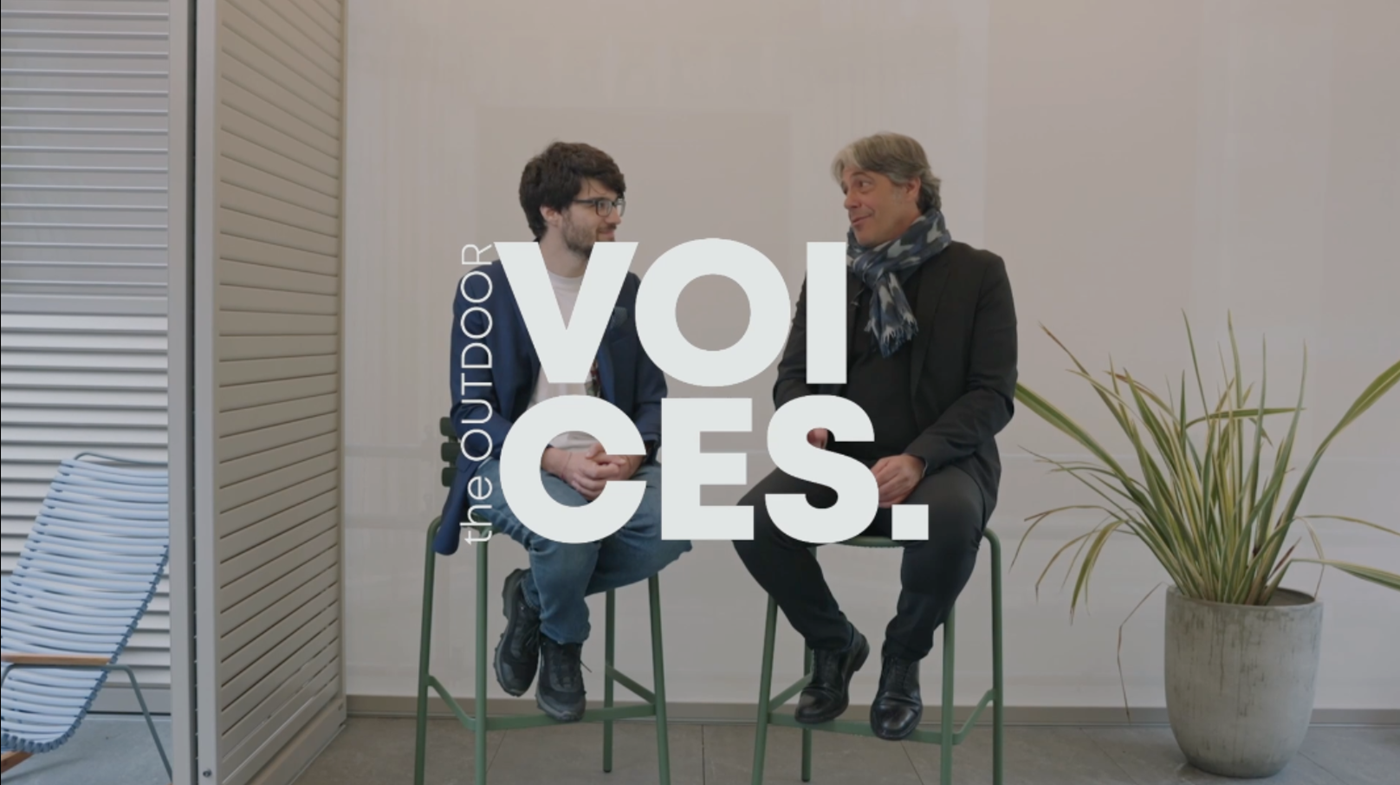Insights
The Outdoor Voices. Encounters, stories, ideas and open-air trends.

A space in which to listen to new stories, have new experiences, discover people and share inspirations. A place for dialogue and essentially a meeting point.
Corradi presents “The Outdoor Voices”, the format produced together with Giorgio Tartaro, dedicated not only to lovers of design and architecture, but to all those who want to broaden their horizons, learn about new perspectives and {re} discover open space.
Each episode will be dedicated to investigating the world of the outdoors and beyond. The protagonists of The Outdoor Voices are people from the worlds of design, culture, sport and entertainment, who will share their thoughts and inspirations with us through their stories and experience.
A universe of interactions that will take us on a cultural journey, starting from our comfort zone and going beyond, with a clear objective in mind: to explore the world outside together.
Talk 1: Alvar Aaltissimo
The first guest on The Outdoor Voices was Fabrizio Esposito, author of the Instagram profile @alvaraaltissimo, and the book “Case Milanesissime. Piante dell'abitare del XXI secolo”, published by Corraini Edizioni.“A room with a very high ceiling” is the first association the architect makes with the outdoors, opening the talk with Giorgio Tartaro, host of the format, with the subtle irony that characterises all of his work.
There are very Milan-style houses with equally Milan-style outdoor spaces: "The first of many was the Casa con Terrazzino (House with a Terrace)". Alvar Aaltissimo's account speaks of a Milan with a surreal real estate market, made up of irrational layouts, imaginary flats offered for rent or for sale in the city, even dotted with balconies, terraces and open spaces, born of the ever-increasing need to be able to count on an outdoor space, albeit a small one.
Irony plays a key role in the investigation of architecture, “How much can design help?” asks Tartaro.
“Irony is something for which you have to challenge yourself, to consider other points of view. So rather than asking ourselves how much influence it has, we should ask ourselves to what extent it should influence the definition of a work”. A good design depends largely on stepping outside the box then, and finding innovative answers through irony.
“With the Alvar Aaltissimo studio, we are working on a master plan for a city of the future that is a parking city, i.e. a city made up of motorway interchanges and parking spaces where you enter into “flowers” where everyone has their own parking space. So one-to-one ratio, parking space/inhabitant”. Here is the dystopian version of the outdoors for Architect Esposito, who proposes in his work a desecrating idea capable of combining architecture, satire, current events and communication.
“Words are important”, Giorgio Tartaro continues, quoting Nanni Moretti, “Tailored, bespoke, lively: what triggers irony?”
The importance of the relationship between reality and narrative is primary in an architectural context, “the value of words becomes ironic and worthy of mockery when they do not correspond to reality” continues Aaltissimo, “you can say you are sustainable and not be sustainable at all for example”.
The paradox and its communication are central to the narrative, and in the folds of modern society they find their place in the form of dystopian places, where Alvar Aalto's curves, projected into a fast-paced Milan, are transformed into endless treadmills that allow those who work to never stop.
